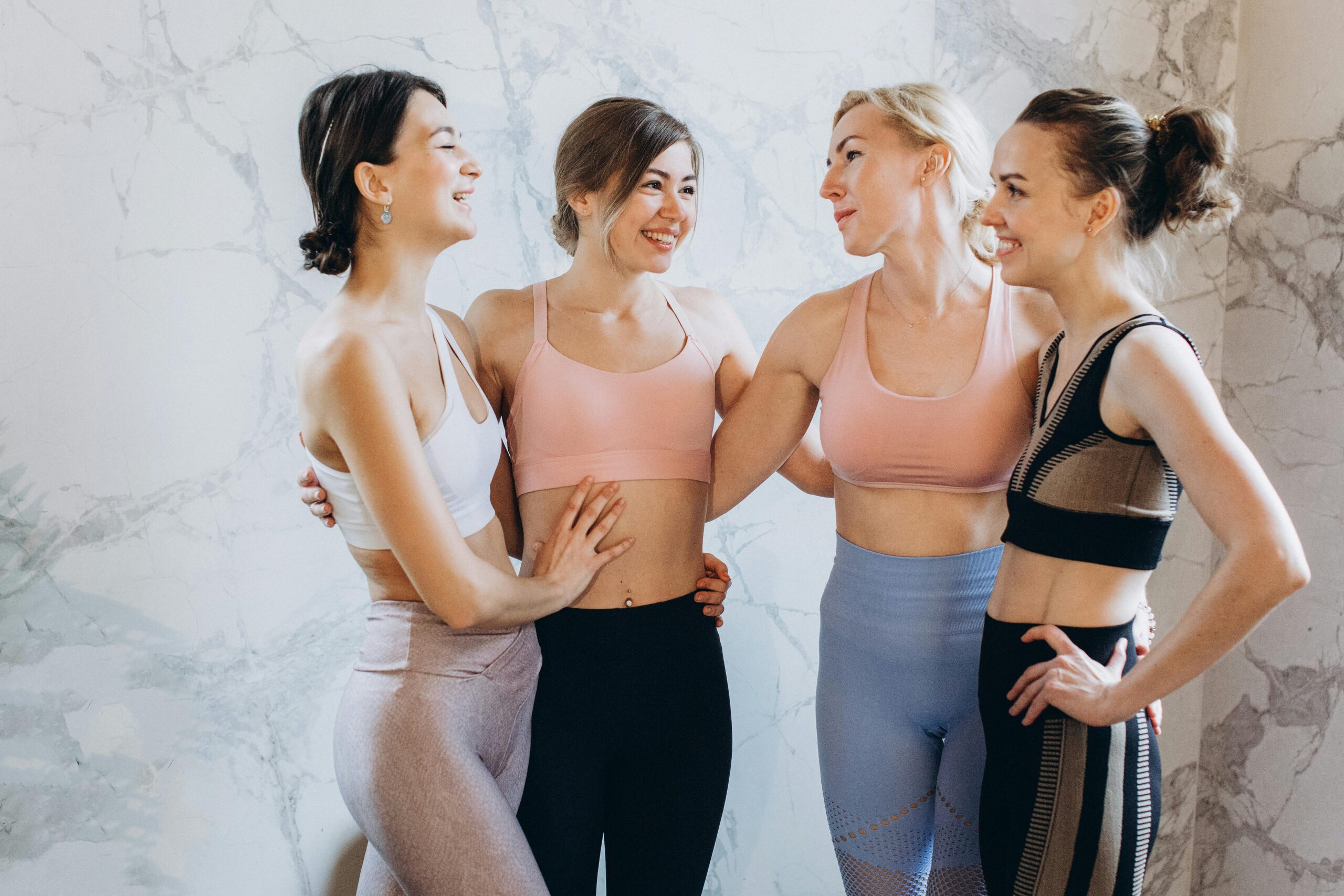
Leggings have become a go-to wardrobe essential for many, blending style with comfort. Whether you’re hitting the gym, lounging at home, or running errands, leggings provide the perfect fit. But have you ever wondered what fabric is leggings made of? Understanding the materials used in leggings can help you choose the best pair for your lifestyle.
In this article, we’ll uncover the secrets behind legging fabrics, their benefits, and how to pick the right one for your needs.
The Foundation of Legging Fabrics: What Are They Made Of?
The fabric in leggings isn’t just a random choice; it’s a carefully selected blend of materials designed to enhance comfort, durability, and style. Let’s break down the most common materials found in leggings.
Cotton – The Cozy Classic
Cotton is a natural fiber known for its softness and breathability. It’s often used in leggings for casual wear and low-impact activities.
- Why Choose Cotton? Cotton leggings feel soft against the skin, making them a great choice for everyday use. They are breathable, keeping you cool in warmer climates. However, cotton lacks the stretch and moisture-wicking properties needed for intense workouts.
- Drawbacks of Cotton:
Cotton absorbs sweat, which can lead to discomfort during physical activity. Additionally, it tends to lose shape over time, especially if not blended with stretchier fabrics like spandex.
Polyester – The Activewear Essential
Polyester is a synthetic material that dominates the activewear market. It’s lightweight, durable, and designed to handle moisture effectively.
- Why Choose Polyester?
Polyester leggings are ideal for fitness enthusiasts. The fabric wicks sweat away from the skin, keeping you dry during workouts. It’s also resistant to shrinking and wrinkling, making it easy to care for. - Potential Downsides:
Polyester can sometimes feel less breathable in hot weather. Additionally, if not properly maintained, it may retain odors over time.
Nylon – The Stretch Superstar
Nylon is a durable and stretchy synthetic fabric that’s a favorite for high-performance leggings. It’s smooth to the touch and retains its shape even after frequent use.
- Why Choose Nylon?
Nylon leggings are incredibly flexible, making them perfect for yoga, running, or other high-movement activities. The fabric resists wear and tear, ensuring longevity. - Challenges with Nylon:
Nylon tends to trap heat, which might not be ideal for very hot weather. It’s also slightly more expensive than other synthetic options.
Fabric Blends: Combining Strengths for the Perfect Legging
Leggings often use blended fabrics to combine the strengths of different materials. These blends improve stretch, durability, and overall comfort.
Cotton-Spandex Blend
- Why It Works:
This blend balances cotton’s softness with spandex’s stretch. The result is a fabric that’s comfortable and flexible for everyday use. - Best For: Casual wear, light activities, or lounging.
Polyester-Spandex Blend
- Why It Works:
Polyester provides durability and moisture-wicking properties, while spandex adds flexibility. This blend is perfect for fitness enthusiasts. - Best For: High-intensity workouts, running, or gym sessions.
Nylon-Spandex Blend
- Why It Works:
Nylon offers strength and a smooth finish, while spandex ensures stretch and recovery. Together, they create leggings ideal for active lifestyles. - Best For: Yoga, pilates, and outdoor activities.
Factors That Impact Legging Fabric Performance
When choosing leggings, it’s important to consider how the fabric performs in various scenarios. Let’s dive deeper into the key factors.
Stretch and Recovery
Stretchiness is essential for leggings. Without it, they won’t move with your body or return to their original shape. Spandex, a key ingredient in most leggings, ensures flexibility and recovery.
Breathability
Natural fibers like cotton are breathable and comfortable for casual wear. For workouts, synthetic blends like polyester-spandex offer better moisture control without sacrificing comfort.
Thickness and Opacity
The thickness of the fabric determines how see-through your leggings are. Nylon and polyester blends often provide the best coverage, making them squat-proof and suitable for intense workouts.
Choosing the Best Leggings for Your Lifestyle
Leggings are versatile, but not all fabrics suit every situation. Here’s how to pick the right fabric for your lifestyle.
Performance-Driven Fabrics for Fitness
- Opt for fabrics like polyester-spandex or nylon-spandex blends.
- These materials excel in durability, stretch, and moisture-wicking properties.
- Thicker fabrics ensure they’re squat-proof and ready for intense activities.
Comfort Above All for Everyday Wear
- Cotton or cotton-polyester blends are perfect for lounging or casual outings.
- Their softness and breathability keep you comfortable throughout the day.
- A touch of spandex ensures the fabric moves with you without losing shape.
Eco-Conscious Choices That Matter
- Recycled polyester and organic cotton blends are excellent for those prioritizing sustainability.
- These fabrics reduce environmental impact while maintaining comfort and functionality.
- They reflect a lifestyle that values both performance and the planet.
Caring for Your Leggings: Maintenance Tips
Proper care extends the life of your leggings, keeping them comfortable and functional.
Washing Tips
- Use cold water to maintain elasticity.
- Avoid fabric softeners, as they can weaken the stretch fibers.
- Wash similar fabrics together to reduce pilling.
Drying Tips
- Air dry your leggings to preserve their shape.
- Avoid direct sunlight, which can damage synthetic fibers.
Storage Tips
- Fold your leggings neatly to avoid stretching.
- Store them in a cool, dry place to prevent fabric deterioration.
Conclusion
Understanding what fabric is leggings made of can help you make informed choices for comfort, style, and performance. From the softness of cotton to the durability of polyester and the flexibility of spandex, each fabric offers unique benefits. Choosing the right leggings depends on your lifestyle, whether you’re focused on fitness, casual wear, or eco-friendly options.
If you’re looking to embrace a lifestyle moving toward sustainability, eco-friendly fabrics like organic cotton or recycled polyester are excellent choices. So, choose wisely and enjoy the perfect blend of comfort and functionality.
Q&A Section – Common Questions About Legging Fabrics
Q1: What’s the best fabric for gym leggings?
Nylon-spandex blends are ideal for gym use. They provide stretch, durability, and moisture-wicking capabilities.
Q2: Can I wear cotton leggings for workouts?
While comfortable, cotton leggings aren’t ideal for intense activities as they absorb moisture and lack stretch.
Q3: How do I check if leggings are squat-proof?
Hold the fabric up to light and stretch it slightly. If it remains opaque, it’s squat-proof.
Q4: Are eco-friendly leggings worth it?
Yes! Recycled polyester and organic cotton leggings are sustainable and provide great performance.
Q5: How do I prevent leggings from losing elasticity?
Wash them in cold water, avoid harsh detergents, and air dry to preserve their stretch.






No comment yet, add your voice below!